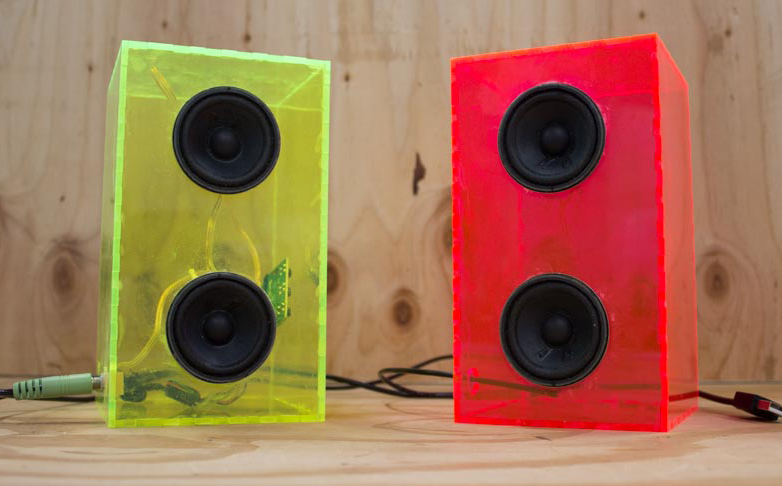
As someone who has minimal experience with electronics, I can wholeheartedly say that this project is not only useful but also very beginner friendly. I really enjoyed making these speakers and their enclosures because they were a great way to combine soldering and laser cutting. For this specific project, I took apart an old set of speakers to use the existing amplifier and then hooked up the new individual speakers to the board. I chose to use neon acrylic for the enclosures because I thought the colors would be a nice way to brighten up my study space, but it may be easier to use an opaque acrylic since the acrylic cement used to glue the speaker enclosures together can leave marks on the plastic. Each speaker is 4″×4″×7″, making them a substantial size but still useable on a desk.
Another great thing about this project is that it is easily customizable. Depending on the materials you have on hand, you can make the speakers with a USB or auxiliary connection and can easily change the size of the enclosures to fit into your own desk space. In addition if you wanted to use larger speakers or build a subwoofer, you can still follow the same general steps of this project.
To make the steps easier to follow, I broke the project down into two main parts. First, I wired the speakers together and tested them to make sure that everything worked. Once I finished the wiring process, I cut the acrylic using a laser cutter. Just to ensure that I had designed my vector files correctly, I first cut the enclosures out of cardboard for a model that would not waste any of my material. Lastly, I glued the enclosures and speakers together and tested them once more before I finally put on the tops.


